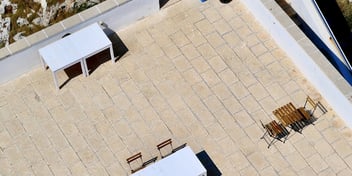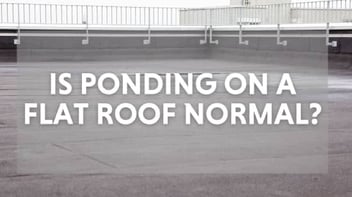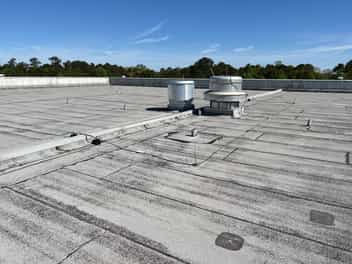- Home »
- Learningcenter »
- Commercial buildings flat roofs
10 Reasons Why Many Commercial Buildings Have Flat Roofs
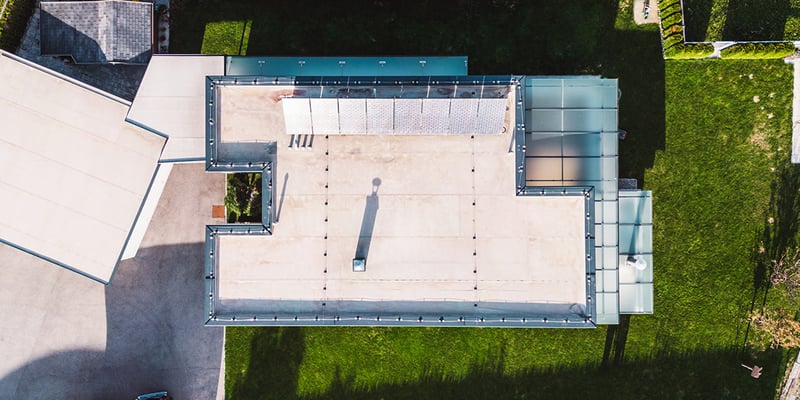
If you’re constructing a new commercial building, you might be wondering why it’s so common for this type of structure to have a flat rather than a pitched roof. After all, don’t pitched roofs require less maintenance, easily shed water with a properly installed gutter system, and add value to a property?
While that all might be true– and pitched roofs are common on residential homes for exactly those reasons– there are a number of compelling benefits of flat roofs that make them the obvious option for commercial buildings.
While the most obvious reason might be the cheaper upfront cost of installing flat roofs versus pitched roofs, that isn’t the only explanation. Flat roofs also offer additional space for equipment storage, are fast and easy to install, and are well suited to the materials and methods of modern commercial construction, to name a few.
Let’s look at some reasons why flat roofs are the norm for commercial buildings in the U.S. to help you determine whether a flat roof is the right choice for your structure.
Why Do So Many Commercial Buildings Have Flat Roofs?
Undoubtedly, one of the reasons that so many commercial buildings have flat roofs is that it has become very standard in the U.S.. Beyond that, building owners commonly choose to have their structure fit in aesthetically with the other buildings in the area, and a commercial building with a pitched roof would really stand out in a location with many large, flat-roofed commercial structures.
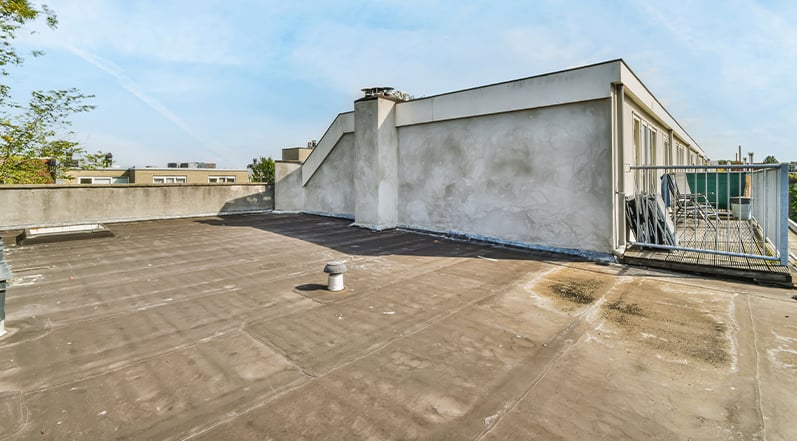
That being said, that’s hardly the only reason why flat roofs are so common for this type of building. Flat roofs provide a number of benefits that are particularly meaningful for commercial properties, including energy efficiency, ease of access, and affordability.
1. Easy and Fast Installation
One of the reasons that commercial building owners tend to install flat roofs on their buildings is that they are easier and faster to install than pitched roofs. Fewer materials are required to cover a flat roof, and the structure of a flat roof is simpler.
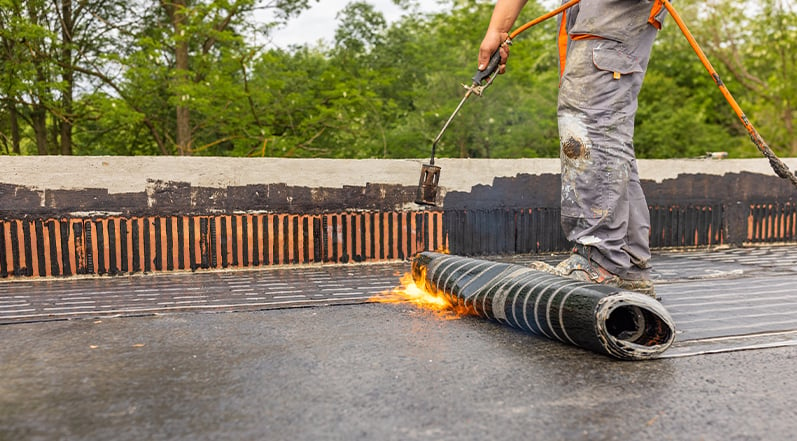
In combination, this means that flat roofs can be installed at a lower upfront cost and more quickly. For business owners concerned with how long their regular business operations are interrupted by a roofing process, a faster timeline can be very valuable.
2. Equipment Storage
Flat roofs also offer a lot more storage space than pitched roofs. There are often numerous systems required to operate a commercial building, and installing so many systems can mean that valuable real estate is taken up in the building that could otherwise be used for vital business operations.
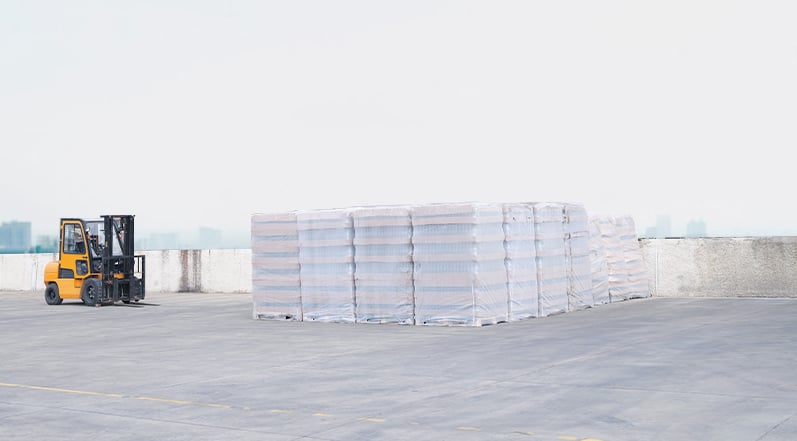
HVAC systems and other weather-resistant systems can be installed on the roof to save interior space for commercial buildings, which is a selling point to many building owners and managers. When HVAC equipment is stored on a flat roof, it makes it easy for maintenance staff to access them without interrupting the normal flow of business inside the building.
When a building has a sloped roof, on the other hand, it means that HVAC equipment would have to be installed in the interior of the building. This doesn’t just take up valuable square footage but can also mean a slow-down in regular operation if located in a less-than-convenient location.
3. Energy-Efficiency
Another reason that flat roofs are a common choice for commercial buildings is that there are a number of cool roofing options available. Many of the most popular flat roof materials are highly reflective, which means that they can help keep the interior temperature of the building down and therefore reduce the cost of cooling bills in the summer.
Beyond that, an energy-efficient flat roof also means that your HVAC system isn’t working nearly as hard to make the interior of your building comfortable. With less strain on your system, it will likely require less maintenance and enjoy a longer service life.
Of course, the benefits of using a cool roof for your particular business are going to depend on a number of different factors, including your local climate. For commercial buildings in climates that endure long, hot summers, though, it can make a notable and meaningful difference in your utility bills.
Flat roofs provide even more advantages when it comes to energy efficiency if building owners choose to install solar panels. Flat roofs are great for installing solar panels, as you can orient them so that they are at an optimal angle for energy production.

There are many flat roof options for building owners interested in saving money on their utility bills in the summer. According to the U.S. Department of Energy, single-ply membranes, built-up roofs, modified bitumen membranes, and SPF roofs have available “cool” options that can help keep roof temperatures down and buildings cooler during the summer.
4. Drainage Options
The average size of commercial buildings constructed in the U.S. during the 2000s is 19,000 square feet. Such a large building is going to collect a lot more rain than the standard 2,000 or so square foot home in the U.S.. Though standard gutter systems can do a great job dealing with rainfall for a residential home, the higher volume of rainwater collected by commercial buildings often demands a different solution.
This is because standard gutters are often far too small to deal with so much rainfall at one time. This means that water can begin to get backlogged in the gutter system, which can splash off the roof edges, damage the property, or wear on the roofing materials.
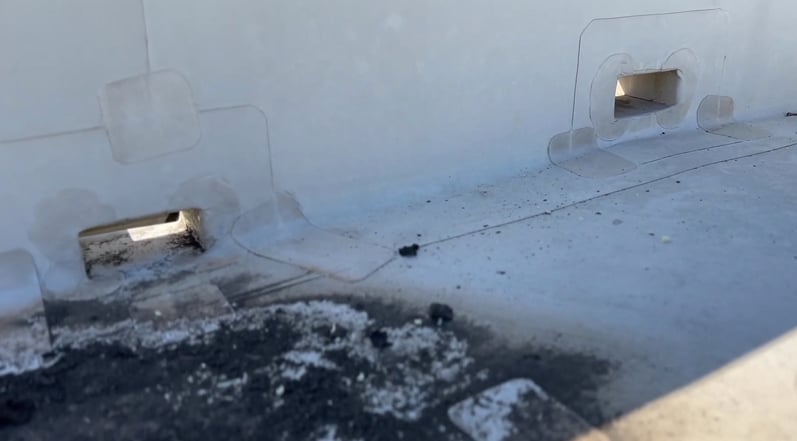
A more elaborate drainage system is usually required for a commercial building to deal with the amount of rain falling on its roof during any given rain event. Flat roofs allow pipes across the roof, internal pipes, and other drainage system features that safely and effectively divert water off the roof and away from the building.
If you’ve always been curious to learn how flat roofs drain water and avoid ponding water, look at our guide to flat roof drainage for owners and managers.
5. Framing Requirements
Most commercial buildings these days are constructed out of concrete and steel to maximize durability and strength. However, these materials make it difficult to use wooden framing for a pitched roof or an aluminum gutter system. Part of the reason for this is that these materials expand and contract at various rates when the temperature fluctuates, which can have a negative impact on their stability when used together as a part of the same system.
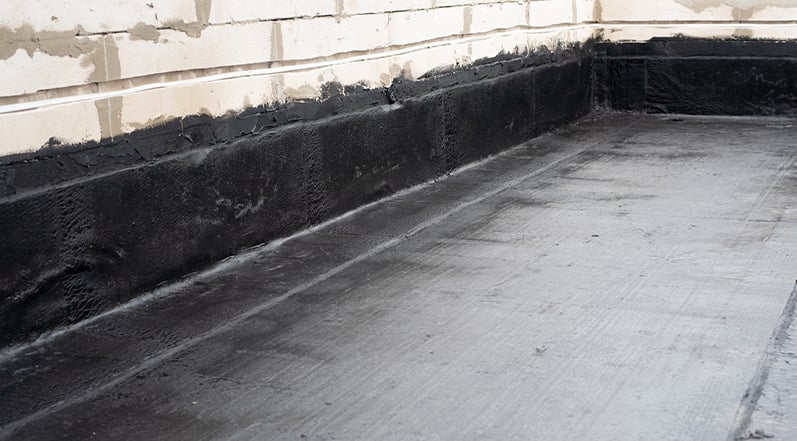
One of the benefits of flat roofs for commercial buildings is that they don’t require a wooden frame. Beyond that, the types of roofing membranes used on flat roofs work well with modern materials commonly used in commercial construction, including concrete and steel.
6. Additional Space
Depending on how a flat roof is constructed and the materials used, flat roofs can also offer valuable additional space to commercial building owners and managers.
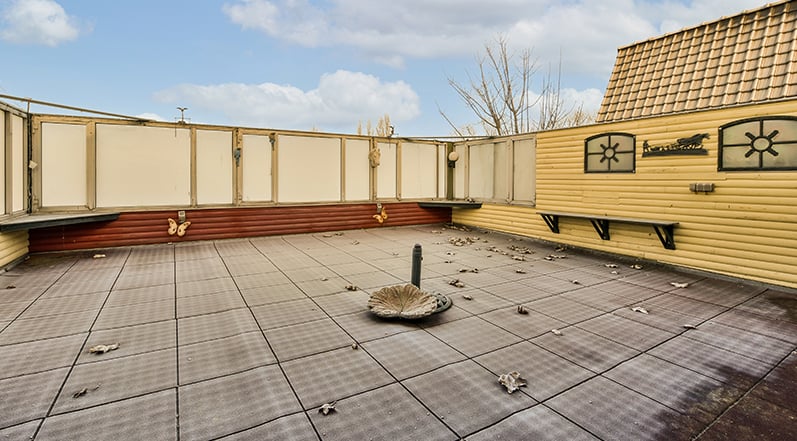
A patio or garden can be installed on the roof, and some might even go the extra mile and install a green roof.
7. Easy to Access
If you’ve ever climbed on a pitched roof before, you know that accessing a steep roof isn’t the most comfortable or convenient thing to do. Flat roofs, on the other hand, are much easier to access and don’t require any special training or equipment to walk on them.
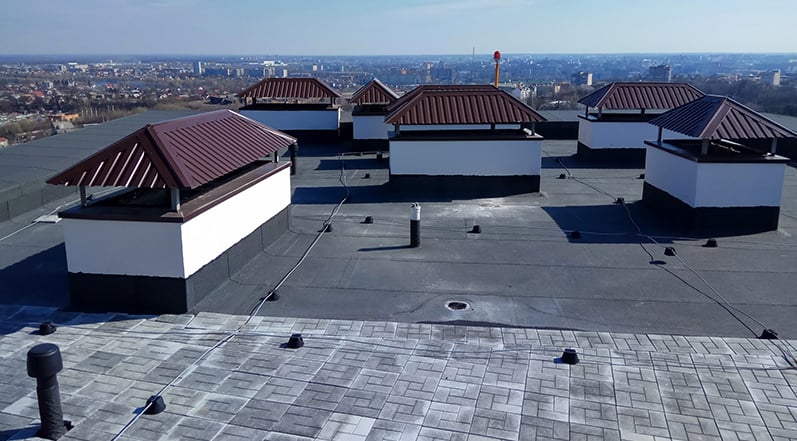
There’s no risk of a person sliding off a steep angle with a flat roof, which makes them much more practical and safe for owners that need to regularly access their roofs. That being said, it’s still very important to practice all safety protocols when up on a flat roof, but they tend to be much easier to traverse than pitched roofs.
8. Cost-Effective
Another major reason that you see so many commercial buildings with flat roofs is that they are more cost-effective. Many of the materials used to construct flat roofing systems are affordable and easy to install, as they tend to come in large sheets rather than the shingle or tile style of pitched roofs.
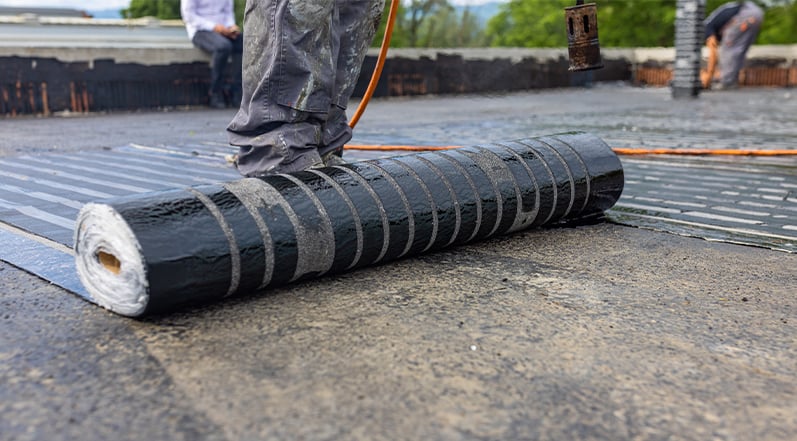
Additionally, all other things equal, pitched roofs take up larger square footage than flat roofs for the same size building. This means that fewer materials are required to install a flat roof, which can make a huge difference when you’re talking about a 20,000-square-foot commercial building.
9. Maintenance
The truth is, flat roofs can actually require a bit more maintenance than pitched roofs. This is because it’s common for debris to collect on flat roofs. That being said, it’s much easier for building owners to have their own maintenance crews clear debris from flat roofs and otherwise work on them because they are safer and easier to walk on. Additionally, it’s easier to spot damage or leaks thanks to the nearly flat surface.
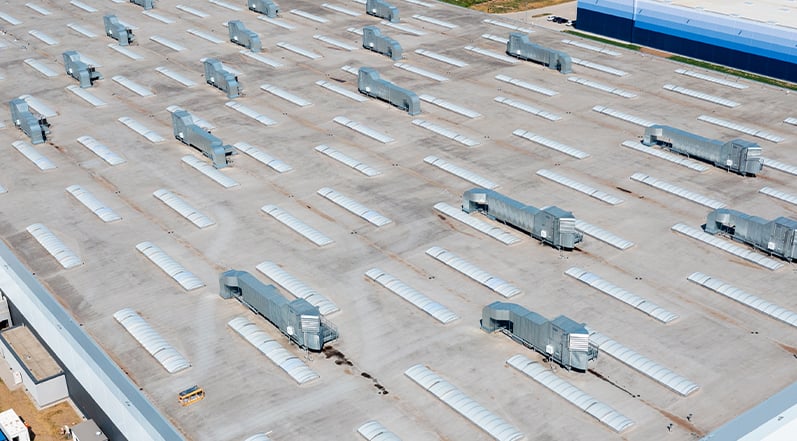
If your maintenance team does happen to notice that there are small tears or cracks in your flat roof, there’s an affordable solution available to help ensure no water gets into your building that can also help to extend the life of your roof. Roof coatings, which come in many different varieties, can be applied on top of an existing roof in order to create a waterproof, seamless membrane that will also fill in small cracks in your roof.
10. Lifespan
Though there are many different materials that flat roofs can be made using, and the lifespan of each can vary, the more affordable price tag for flat roofs vs. pitched roofs doesn’t necessarily mean that they won’t last as long.
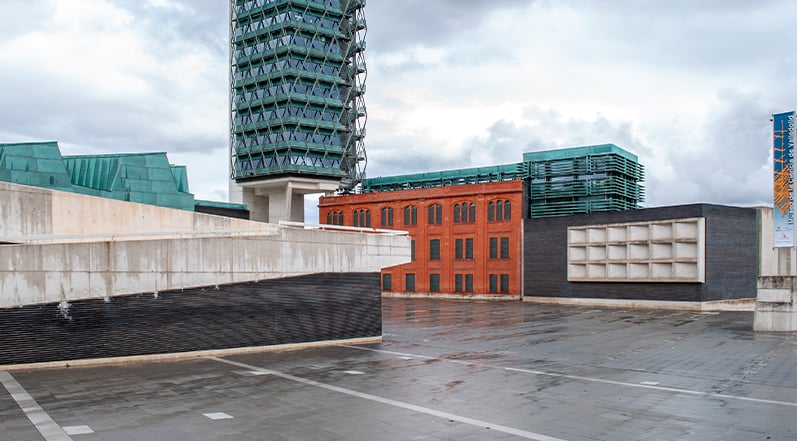
When a flat roof is maintained properly, it can last for many decades.
The Most Common Types of Flat Roofs
Now that we’ve gone over why flat roofs are such a common choice for commercial buildings, let’s look at some of the materials frequently used to construct these low-slope roofs.
EPDM Rubber Roofing
EPDM roofs– often referred to as “rubber roofs”– are made using a highly durable synthetic rubber roofing membrane.
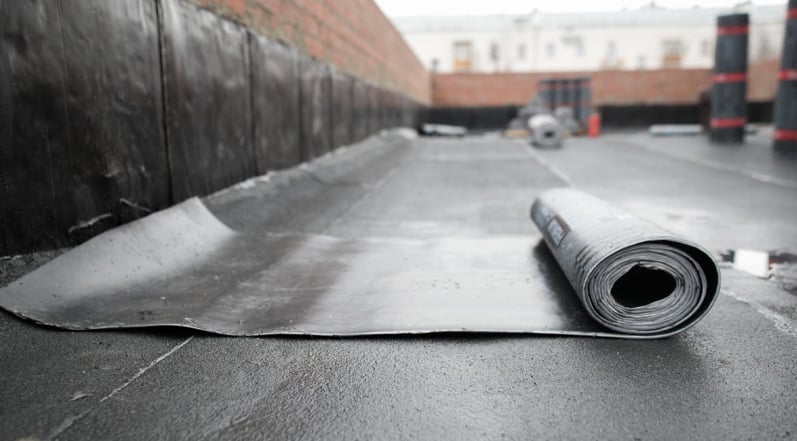
There’s a good chance you’ve seen these roofs before, as they are very common on commercial buildings in the U.S. and around the world.
Built-Up Roofing
Used in the U.S. for more than a century, built-up roofs are another common roofing system on commercial and industrial buildings. These roofing systems consist of three primary elements: bitumen, felt, and surfacing.
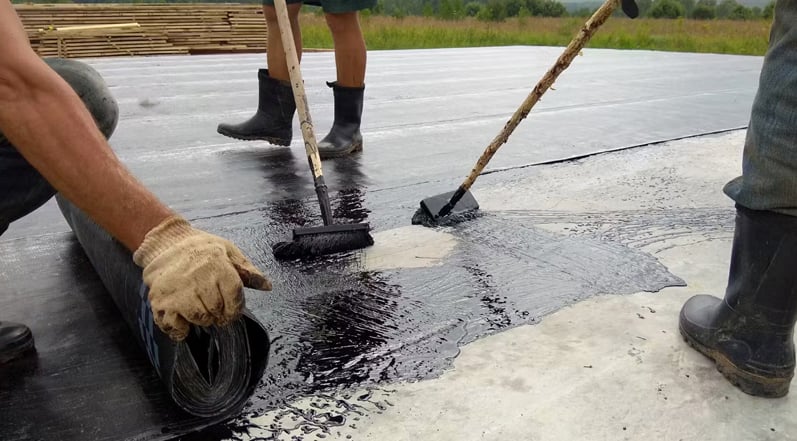
Also known as tar and gravel roofs, the top layer of these roofing systems use gravel or small stones to help protect the roof.
Modified Bitumen Roofing
Similar to built-up roofing, modified bitumen systems are made with asphalt combined with either plastic or polymerized rubber reinforced with fiberglass.
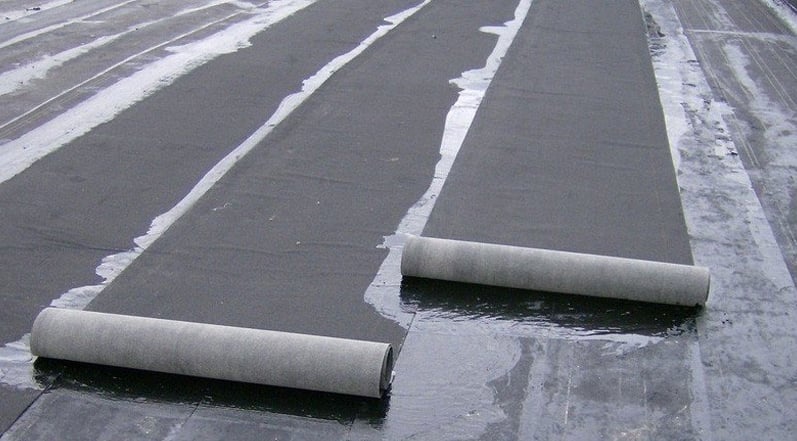
This creates a membrane that is waterproof, rugged, and flexible.
SPF Roofing
Spray polyurethane foam roofing (SPF) is a spray-in-place system that is composed of two liquid chemical compounds– polyol and isocyanate.
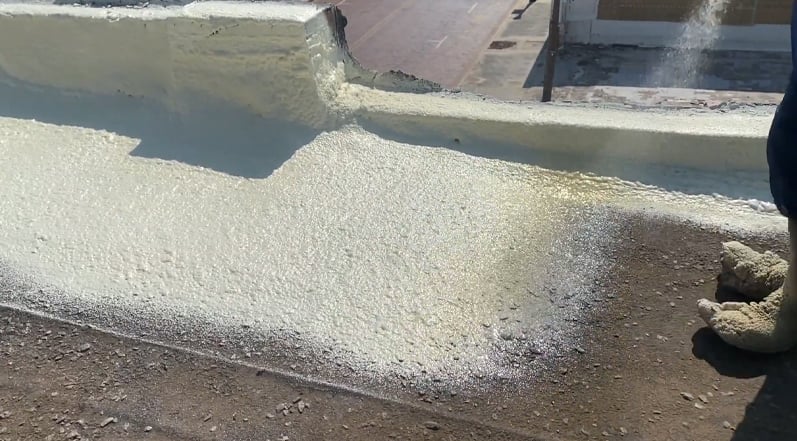
These two chemicals are combined to form the base of the roof system, and a protective surface is applied on top in order to ensure that the roof is protected from the elements and UV rays.
TPO Roofing
Single-layer membranes that typically come in either white or gray, TPO roofing has become increasingly popular in recent years because it is affordable and easy to install.

Another benefit of TPO roofs is that they’re energy-efficient thanks to their light reflective quality.
PVC Roofing
PVC roofing systems are known for being very strong, resistant to chemicals, fire, wind, and moisture, eco-friendly, and long-lasting. They often have a lifespan of about twenty years when properly installed and maintained.
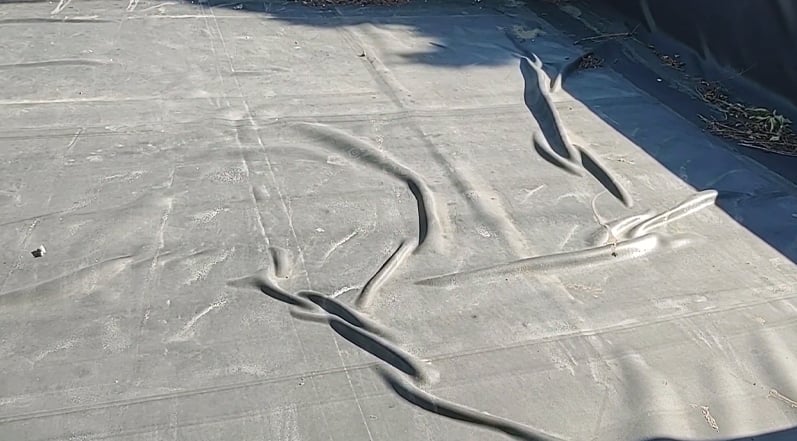
That said, they come at a higher price than other flat roofing materials like TPO. While the upfront cost can be more for PVC roofs, they are a cost-effective solution over the life of a roof.
If you’re wondering whether PVC roofing is a good option for your building, make sure you check out our recent post about PVC roofing membranes.
Is It Time For a New Flat Roof on Your Building?
Whether you’re working on a new building project or it’s time for a roof replacement, Colony Roofers is here to help.
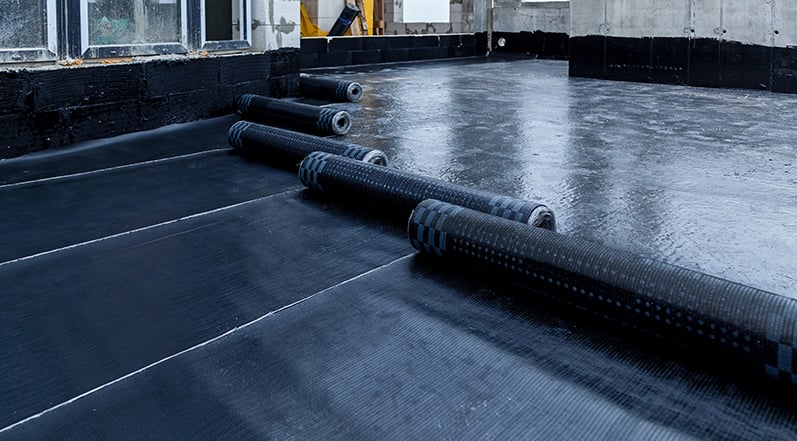
Our experienced team specializes in providing affordable and high-quality commercial roofing solutions in the greater Atlanta area, and we are experienced in replacing a wide variety of flat roofing systems.
 Call (678) 365-3138
Call (678) 365-3138

